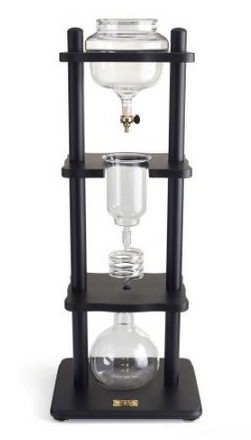Cold Press Coffee – What Is It And How Do I Make It?
by Selmir Omic
If you're like me, you appreciate a good cup of coffee but don't always have the time to make it yourself. So what's the next best thing? Buying coffee from your favorite cafe or Starbucks, right? WRONG! With the best cold press coffee maker, you can have delicious coffee that's made just the way you like it in the comfort of your own home. No more waiting in line or fighting for a spot at the communal table. Plus, if you're into experimenting with different types of coffee and brewing methods, a cold press is perfect for that too. Ready to find out which one is right for you? Keep reading!
Top Cold Brew Coffee Makers by Editors' Picks
- #PreviewProductRating
- Bestseller No. 1
- Bestseller No. 2
- Bestseller No. 3
- Bestseller No. 4
- Bestseller No. 5
- Bestseller No. 6
- Bestseller No. 7
- Bestseller No. 8
- Bestseller No. 9
- Bestseller No. 10
Although hot weather doesn't seem to stop many of us from getting in that line and ordering some deep black joe, as sweat trickles down our temples, there is another option which you may not have tried…and you should!
Cold press coffee is a delicious cold coffee drink where you might want to grab a comfortable lounge chair on your friend's deck somewhere. That's because this drink is refreshing and cold, while still being…well, coffee!
Contents
- Top Cold Brew Coffee Makers by Editors' Picks
- What Is Cold Press Coffee ?
- Where Did Cold Press Coffee Originate From ?
- What Are the Benefits of Drinking Cold Press Coffee
- Preparation for Cold Press Coffee
- What's The Difference Between Cold Press & Iced Coffee?
- Cold Press AKA Cold Brew?
- Cold Press Coffee Tips
- Cold Press According To Jamie O.
- What Are Some Popular Recipes for Cold Press Coffee
- The Last Word for Cold Pressing Coffee
- Wanna Get Crazy?
What Is Cold Press Coffee ?
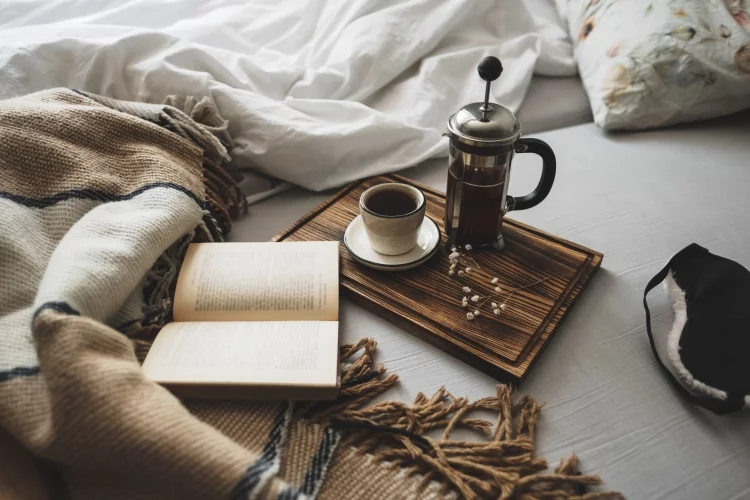
Cold press coffee has been a method of brewing coffee using extremely low temperatures to extract the flavor from the beans without cooking or burning them.
It is a popular trend in specialty coffee shops and has become available for home use as well. The cold press process can be time consuming, but most consider it worth the effort considering the unique taste and lack of acid and bitterness that comes with the final product. The cold press method produces coffee concentrate, which is black coffee that has been reduced to a syrup-like consistency where it can be stored for several days or frozen to last even longer. Cold press coffee is also referred to as (but not limited to) cold brewed coffee, cold extraction, cold press extraction, and coffee on ice.
Sometimes called iced coffee or iced espresso, cold press coffee is making its way into the mainstream. By contrast, hot-brewed coffee is made by pouring boiling water over ground beans. Cold brew uses room temperature or colder water to slowly steep coarsely ground beans for 12 to 24 hours. The result is a sweet and rich flavor, which some coffee drinkers claim is more aromatic than hot-brewed java.
Where Did Cold Press Coffee Originate From ?
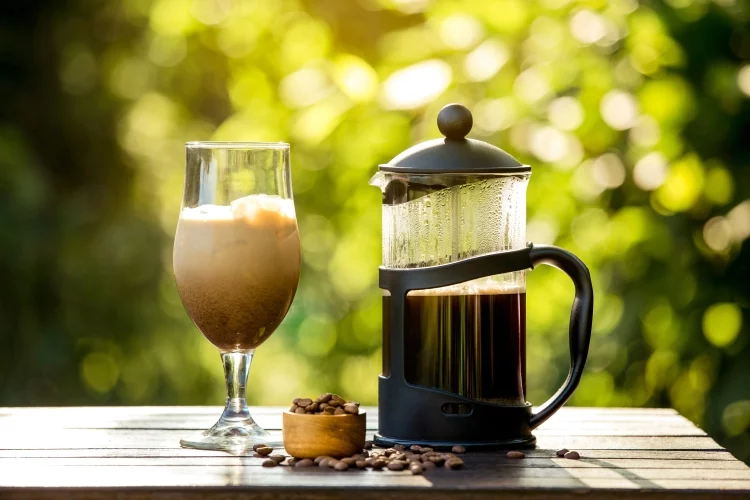
In the early 1990s, Todd Simpson invented a home version of cold press coffee using a device called "Mr. Coffee® Filtron®" because he wanted to produce a better tasting cup of their morning joe. The invention was popular among his friends, which gave him the idea to sell the product. He founded "Filtron®" in 1995, which became one of the first companies to mass-produce and distribute cold press coffee.
Today, there are many commercial products on the market that produce excellent results when following recipes outlined by their manufacturers or simple ones found online. The Filtron® system is a popular choice and is still produced today. Many who do not wish to invest in a device specifically made for cold press coffee use the French press method instead. It is fairly simple, but does require that you heat the water on your own and then allow it to cool to an appropriate temperature before immersing the ground beans.
The most difficult part about cold press coffee is the wait time. As mentioned, you need to heat up the water (typically about 200 degrees Fahrenheit) and then allow it to cool for around four hours before use. There are many methods that can be used to speed up the process, but they all involve some type of sacrifice in flavor or quality.
What Are the Benefits of Drinking Cold Press Coffee
The coffee that most people drink is not cold press coffee. It's hot, and within 2 minutes it's ready to be poured in a cup with cream and sugar. But cold press coffee takes time, and patience. Cold pressed iced coffee isn't quite as popular in America, but in parts of Asia and Europe, drinking iced or cold press coffee is a staple in their daily diet. However, controversy still surrounds the cold press method of coffee extraction. While it might not be as quick and easy as the hot method, there are some benefits to drinking your drip coffee iced or cold pressed.
Cold-Pressing Give Coffee Beans Their Flavor
Cold-pressing keeps many of the crucial oils and acids that give coffee beans their flavor. If you're a big fan of coffee, then you know how amazing drip coffee tastes when it's brewed correctly. But did you know that brewing your coffee with cold press or iced methods can keep up to 86 percent of the essential oils and acids in your ground beans? This means that you're going to get a much smoother and better tasting cup of coffee.
Enjoy Their Caffeine Without the Acidity
Cold press or iced coffee is a great choice for anyone who wants to enjoy their caffeine without the acidity. This makes it an excellent choice for those with sensitive stomachs, pregnant women, people with ulcers, and those who have been told to limit their caffeine intake.
A Great Drink for People Lactose Intolerant
It's also a great drink for people who are lactose intolerant or have trouble digesting milk products. Since cold press coffee is brewed without the use of hot water, there aren't any proteins that cause stomach troubles. This means that it can be an excellent substitute for anyone who enjoys drinking cafe lattes, but has trouble with the lactose.
Give Your Metabolism a Boost
Cold press or iced coffee can give your metabolism a boost. Caffeine is an excellent natural stimulant, which is why it's so popular in products like energy drinks and weight loss supplements. Drinking cold press coffee provides you with less caffeine than the hot method since it's often diluted with ice. But caffeine is a great metabolism booster and fat burner, so cold pressed coffee can help rev up your engine and help you burn calories faster.
Healthier for the Environment
It's also healthier for the environment than hot coffee brewing methods because it uses less electricity. Most people know that letting your dishwasher run two or three times a day is bad for the planet. It wastes an enormous amount of energy and water, even if you're using eco-friendly dish detergent. But cold press coffee only requires electricity when it's made.
Can Be a Safer Option
Iced or cold press coffee can be a safer option than hot coffee brewing methods because it doesn't expose your beans to high temperatures. When you brew your coffee with hot water, it's cooking the beans so they will release oils and acids that are both crucial flavor components as well as natural toxins. Those who have trouble digesting caffeine also have problems processing these chemicals so cold press coffee is a better choice even if it contains less caffeine since its heating process has been eliminated
Preparation for Cold Press Coffee
It is so simple to prepare but must be done the day ahead. Yes, the WAIT is the kicker here, but you will find it to be well worth it.
Here is a video by our friends at La Colombe Coffee which shows just how simple it is to make, and distinguishes it from the similarly cold (but oh so different to taste) iced coffee.
What's The Difference Between Cold Press & Iced Coffee?
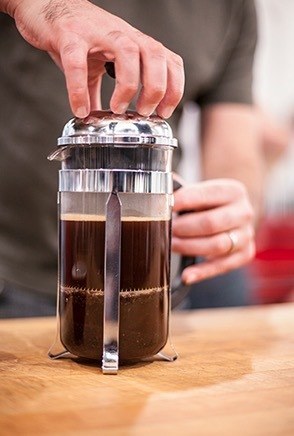
One main thing to take away from this video is that - again - cold press coffee is not iced coffee.
Just to run it by you quickly here, cold press is where you prepare your coffee in the same way as you would with a French Press, except with room temperature water.
On the other hand, iced coffee is where you pour hot coffee over ice. They are two different drinks, and those taste differences are apparent.
Many people complain that iced coffee doesn't have the same appeal, and, really, it doesn't.
For instance, cold press coffee is usually left in the fridge overnight to work its infusion magic.
Iced coffee is just coffee poured on ice. Very different from the get-go!
The, How Do I Make Iced Coffee at Home
There are two things you'll need to make iced coffee. You can put them both into the same cup, if you'd like -- but that's entirely up to you. I just didn't want to dirty any more cups than I had to.
First, brew your coffee using a standard procedure, but don't pour it into a cup just yet. Instead, fill your travel mug halfway with ice cubes and then fill the rest of the way with coffee. At this point, you have a choice: You can drink directly from your portable mug or transfer it to a glass pitcher for easier pouring.
Brewed coffee poured over ice produces cold press coffee that's rich in caffeine without being bitter. It's actually more like a combination between cold brew and iced coffee than it is a standard cup of joe -- and there's no better time to enjoy it than first thing in the morning or right before bedtime.
I'd love to tell you how long this keeps, but I've been opening and drinking it within an hour, so I can't say for sure. However, I doubt that it will keep much longer than a few hours unopened and in the fridge -- so drink up!
Cold Press AKA Cold Brew?
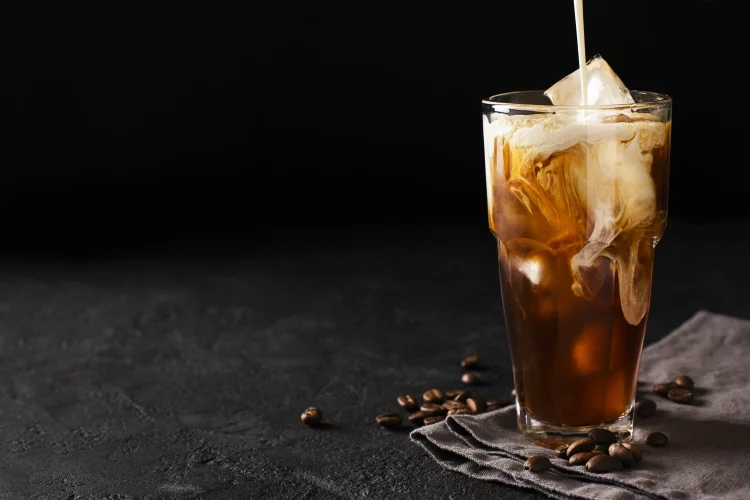
Ah, so just when we thought we were out of the woods with the confusion over the name of cold press coffee and what it is exactly, we run right into…cold brew coffee!
Watch this relatively quick video and we'll catch you on the flipside to explain a little bit more. 🙂
Now, if that video didn't make you want to run right out and prepare some cold brew…err…cold press…err…wait, what's it called again?
You may be wondering, what is the difference between cold press and cold brew coffee?
They both involve a really long infusion time of…well, in the case of this video, Mike Cooper from over at Jamie Oliver's Drink Tube goes with 24 hours rather than the previous 12 we'd mentioned.
So let's say between 12-24 hours. You will have to try this yourself.

Anyway, cold press coffee is just like cold brew coffee, except for one thing lacking that you may have noticed in the video above.
That being, there was NO PRESS. That's right, Mike didn't use a French Press to make his cold brew coffee, but he did use a sieve and some filter paper to get a double filtered brew that gave him that smooth taste he was after.
You may be wondering, is there really any significant difference between cold press and cold brew coffee?
Is it going to taste any different if you don't use a press or if you do? What if you just pour the coffee through a filter like Mike did, as opposed to pressing it?
Cold Press Coffee Tips
This leads us to our next couple of points here, which is to say that you shouldn't worry too much about if you're making "cold brew" or "cold press" coffee, technically.
Why? Because you've got bigger fish to fry first!
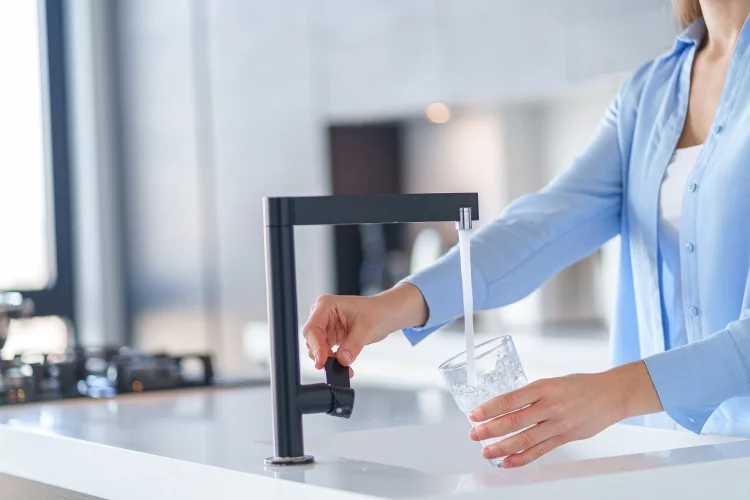
We're talking about things like the water. If you watched the above video, Mike mentions that the water needs to be filtered when you go about making your cold brew coffee.
This is true regardless of whether you have a French Press to work with or not. The water needs to taste good, or, if it doesn't, your coffee won't taste good.
So grab yourself a Brita filter, at least, a bottle of filtered whatever, or do whatever you must to make sure you're starting out with good water!
This might seem obvious, but we think too many people blame the coffee for tasting bad when it's actually their water that doesn't taste very good in the first place.
Always Grind Fresh
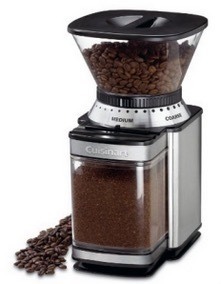
The matter of grinding your coffee beans yourself was also mentioned in the above video, but he didn't place too much emphasis on it.
Of course, if you look at the name of this website, we are a bit obsessed with grinders. We think that if you're going to go to all the trouble of making cold press coffee, you will want to take every opportunity to make your coffee taste amazing.
Isn't that the point, after all? Therefore, you must invest in a good coffee grinder if you want to take advantage of all the potential flavor that is locked away in your beans.
A good grinder can release that flavor. Maybe you already have this angle covered, but if you don't, you should at least think about it.
Cold press coffee is all about taking the time to do things right, and a grinder will surely help with that.
More For Later
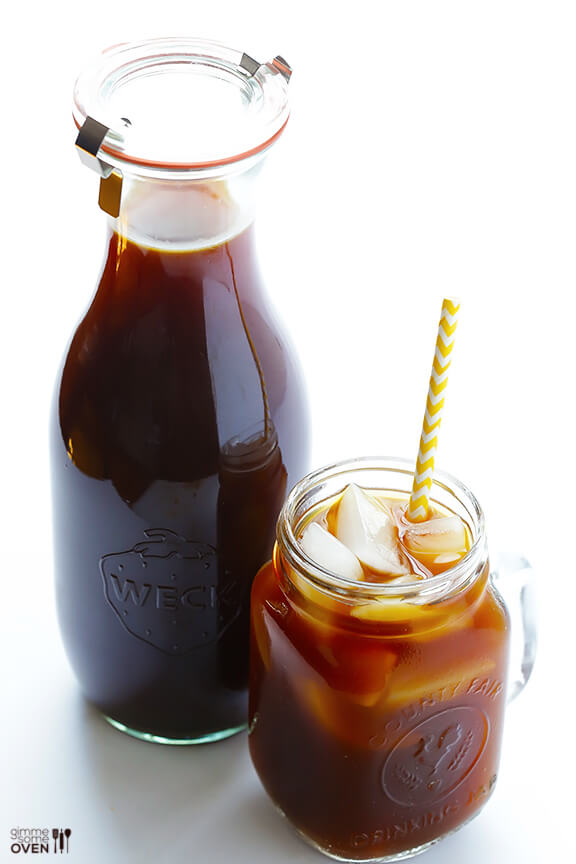
Ok, now that we've established a few things, such as what cold press coffee is (hopefully we've established this by now), and how you need good water and preferably fresh ground coffee (not instant) to make your French Press, we can talk more about some of the benefits of cold press coffee.
One of those benefits is that you can make a whole lot of it. If you have something with a seal on it you can keep the coffee in your fridge for weeks and have delicious cold press coffee whenever you like.
Part of the beauty of cold press coffee is that it is simple to make, simple to store, and tastes phenomenal, due to the fact that you let the coffee infuse for so long before serving. This gives the coffee that magical taste that you won't get from iced coffee.
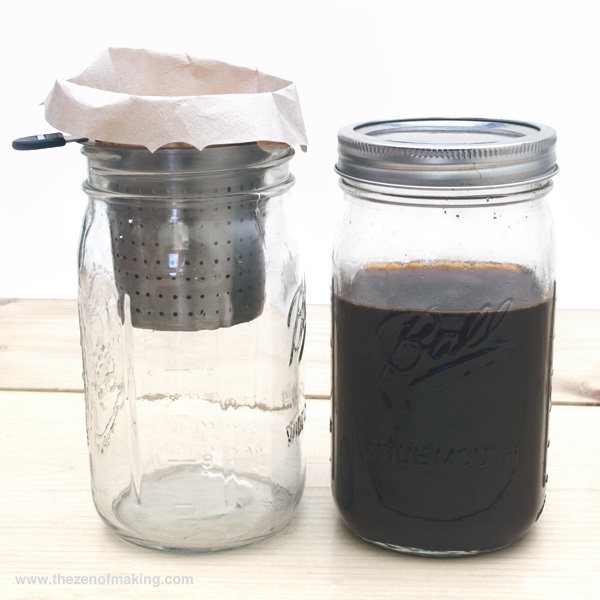
One other question that arises is do you need to initially refrigerate the coffee before it's ready to serve.
You may have noticed in the video with Mike Cooper that he just leaves it on the counter with a cloth over it for 24 hours.
Basically, it comes down to whether the thing you're using to contain the coffee is big enough to fit in your fridge.
Also, you may want the coffee to be at a colder temperature right away, as opposed to having to infuse it and THEN store to to chill it out a bit.
These are things you can play around with, but whether the coffee is stored in the fridge or on your counter overnight - both options are ok.
Oh, and you will want to store it in something other than the French Press you made it in. Something like a jar with a rubber seal works well.
How Do I Store My Cold Press Coffee Once It's Been Made
Have you had your fill of iced coffee, but still have some leftover cold press? Put it in the fridge! But first, you'll need to do a bit of preparation. Before we get into how to store cold brew coffee after you've made it, let's discuss why storing your cold press coffee is so important. The main reason why you would want to store it is so that you can have iced coffee the next day. If your recipe makes 8 cups of cold press, but only enough for two or three servings before bedtime, then what are you going to do with the rest of it?
An important step in storing your small amount of cold brew for tomorrow is to get all of the air out of it. As soon as you've finished "brewing" your cold press, immediately pour the coffee from its container into a pitcher with a sealed lid. Be sure not to leave any room in the pitcher for air, and if possible, use a gas stove or something similar that doesn't give off heat to push all the air out of your container.
Now that we're clear on why you need to store cold press and how to go about doing so, let's take a look at some specific recommendations for how you should keep it:
The best way is with a food saver, which will completely remove any air from your pitcher or containers.
Another just as effective way is to use the water displacement method. This entails holding your pitcher or container upside down underneath a drinking glass, and filling it until it overflows. After you've done this, hold your thumb over the opening of the container, turn it right-side up, and remove your thumb-the air will have been displaced, and the lid will form a tight seal.
To get even more specific, you should store your cold press in the back of your fridge or freezer, since this is where it's coldest. Additionally, in exchange for having to find room for your pitcher in the fridge or freezer, you'll be able to keep it there longer than usual, as the lack of air will prevent oxidation and deterioration.
Always drink your cold presses with a straw; never pour it into a glass without one, as you're likely to stir up some sediment that settled at the bottom of your pitcher or container. You should also be sure not to use too large of a drinking vessel-the coffee needs to be consumed quickly. If you use the water displacement method to remove air, make sure you don't fill up your pitcher too far; remember that cold press will expand slightly when it's still full of gas (air), so fill it no more than halfway or two-thirds full before you put on its lid and seal it tight.
Cold Press Coffee: Quick Stats

- Incredibly easy to prepare
- Use cold filtered water
- Coarse grounds
- Steep between 12-24 hours in the fridge
- A glass container like a mason jar with a lid for storage
- Use some sort of filter i.e. sieve or cheese cloth or an old shirt or a nut bag for cold brew, use a french press for cold press
- 3:1 ratio of water to coffee
- Not bitter but sweet - less acidity
- Saturating the flavors from caffeine and leaving behind the unmentionables
- Maybe add cream or pour over ice
- Smooth tasting
- Highlights various blends and their unique flavors
- Great after a meal to sip with dessert
Ratio Of Water To Coffee
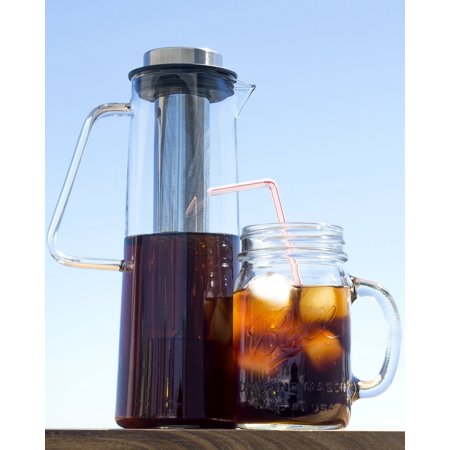
The ratio of coffee grounds to water is subjective and depends on personal taste. A good place to start is to grind 3/4 cup beans for 4 cups of cold water-the size of a 32-ounce French press.
You can double-with 1.5 cups beans for 8 cups water-or even triple the quantities depending on the size of your container.
Next, grind the beans very coarsely. We mean it. A smaller grind will result in cloudy coffee.
Cold Press Coffee In A Jiff (+ 24 Hours)
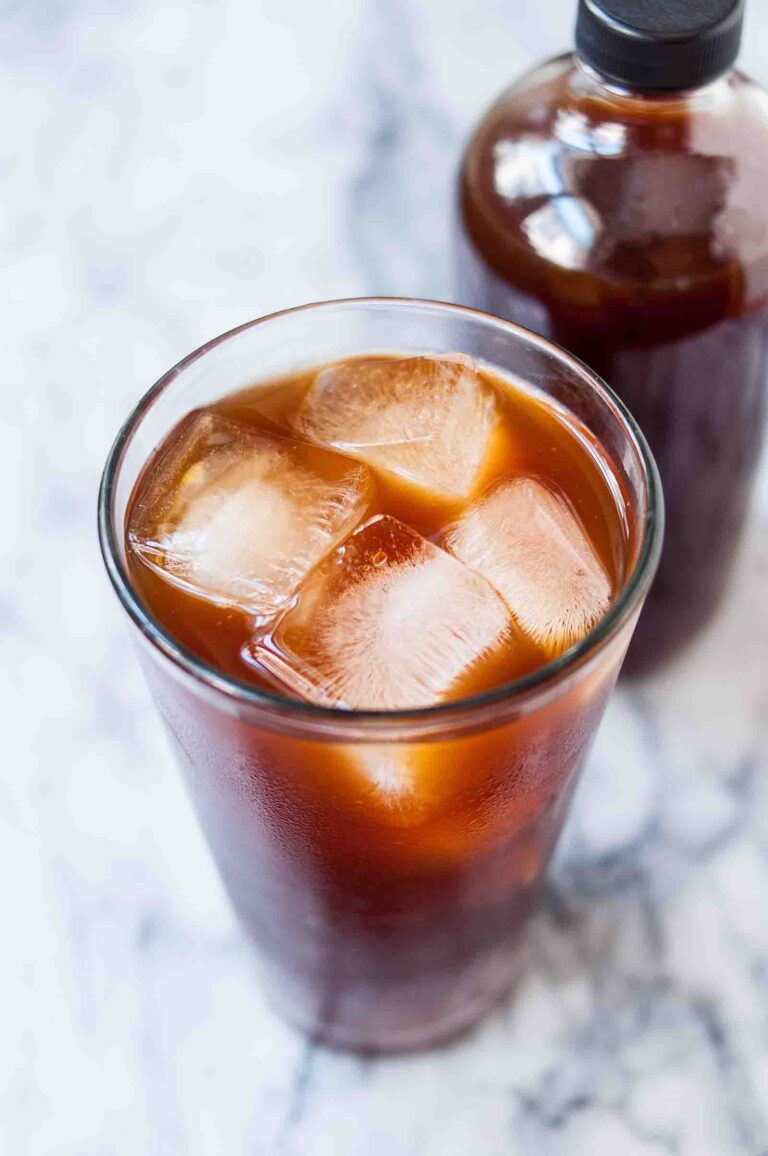
- Put the grounds in the French Press and pour the water over.
- Put the lid on and place in fridge for 24 hours.
- The lid keeps the food odors out.
- Take it out and plunge the French Press as you would normally.
- Drink up with ice and/or cream or store in fridge up to 2 weeks and enjoy a little every day.
Flavor Profile
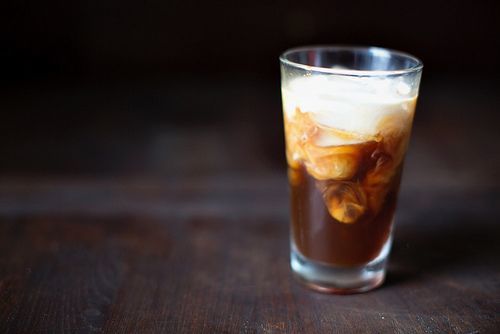
Cold water will react differently with the coffee grinds, and since the coffee never actually touches hot water, it creates a different chemical and flavour profile, resulting in higher caffeine (!!!) and lower acidity.
Less acid gives the coffee a sweeter taste.
Cold water extracts the flavors out of the grounds and leaves the bitter compounds behind.
It might take longer than if you use hot water but it is worth the wait.
When hot water is used, it will cook the grounds as the brew is steeping, and the chemical compounds in the coffee will change and not for the better.
Keep the lid on it while storing it in the fridge.
Takes more coffee to make it, but nothing is wasted.
Smooth cup highlights various blends nicely, and their flavors.
Add a little cream and you have a great post meal option.
Cold Press According To Jamie O.

Here's what Jamie Oliver has to say about it:
"Cold press coffee is not the same as cold coffee offered at large coffee chains, with their creams and syrups and whipped cream. They must be hiding something.
Cold press coffee is more refined.
Cold press coffee takes time to make.
Cold coffee is standard coffee poured over ice and sells cheaply at the corporate chain stores, and tastes bitter. I think it sells for around $1. You get what you pay for.
Cold press coffee is special! This black cold brew, after steeping in the fridge for a day, is poured over ice and sipped through a straw from a clear plastic cup - subtly sweet, rich in immense flavor, but not overwhelming.
It might even taste better from your favorite coffee cup.
Cold press coffee is not watery, and everything great about coffee is in the cup, with an amazing new coffee taste just for you."
What Are Some Popular Recipes for Cold Press Coffee
Whether you're hosting an iced coffee party or just looking for a cool drink to whip up at home, read on for three tasty recipes.
Cold Press Coffee Recipe: The Classic
Ingredients: 2 tablespoons coarsely ground dark roast coffee, 2 ½ cups cold water, 1 cup whole milk (or substitute with cream), 3 tablespoons white sugar (more or less to taste)
Instructions: Place ground beans in a large jar. Add water and stir to mix well. Cover the jar and let it sit at room temperature for about 12 hours. Strain mixture into another jar or container, pressing down on the beans to extract as much liquid as possible. Discard the grounds and stir in milk and sugar. Serve over ice cubes.
Cold Press Coffee Recipe: The Café Au Lait
Ingredients: 2 tablespoons coarsely ground dark roast coffee, 1 cup boiling water, 3 cups cold whole milk (or substitute with cream), 1 tab sugar (more or less to taste)
Instructions: Place ground beans in a large jar. Add water and stir to mix well. Cover the jar and let it sit at room temperature for about 12 hours. Strain mixture into another jar or container, pressing down on the beans to extract as much liquid as possible. Discard the grounds. Add milk and sugar to taste, stirring until combined well. Serve chilled over ice cubes.
Cold Press Coffee Recipe: Iced Mocha
Ingredients: 2 tablespoons coarsely ground dark roast coffee, 1 cup cold water, 1/4 cup cocoa powder, 3/4 cup white sugar (more or less to taste), 1 cup milk, 1 drop vanilla extract
Instructions: Place ground beans in a large jar. Add water and stir to mix well. Cover the jar and let it sit at room temperature for about 12 hours. Strain mixture into another jar or container, pressing down on the beans to extract as much liquid as possible. Discard the grounds. Stir in cocoa powder and sugar until combined well. Stir in milk, a little at a time. Add vanilla extract and stir to mix well. Serve chilled over ice cubes.
Note: Give your coffee drinks a twist by trying out other flavors like mint, chocolate or hazelnut syrup. Experiment with different types of beans as well, such as Colombian, Ethiopian or French roast.
And there you have it! Three recipes for cold press coffee. Choose your favorite and enjoy with a friend today!
Cold Press Coffee Recipe: KnowYourGrinder's Favorite!
Step 1: Set your coffee grinder to its most coarse setting, and check a little of its output before doing the full grind. You are looking for roughly the same consistency as breadcrumbs. Any finer than that and you might get a cloudy brew.
Step 2: It is important to remember the magic ratio. Remember what we said - "A good place to start is to grind 3/4 cup beans for 4 cups of cold water".
Sterilize a large mason jar with a lid or any glass container. That just means pour boiling water into the glass container and let it sit to dry on its own.
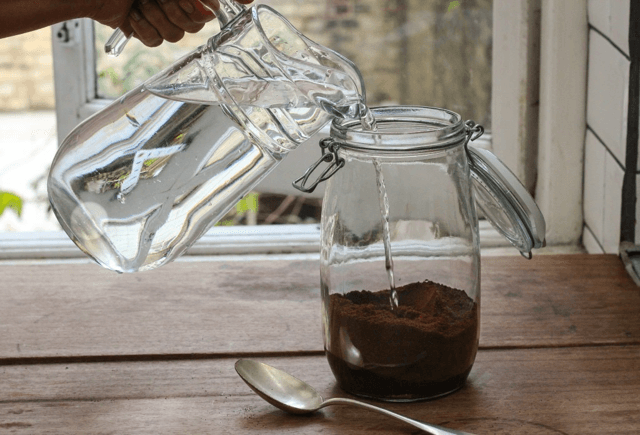
The container should be at room temperature before adding the cold water and the coffee grounds. Stir gently until well mixed and then cover and leave to steep for 24 hours in the fridge.
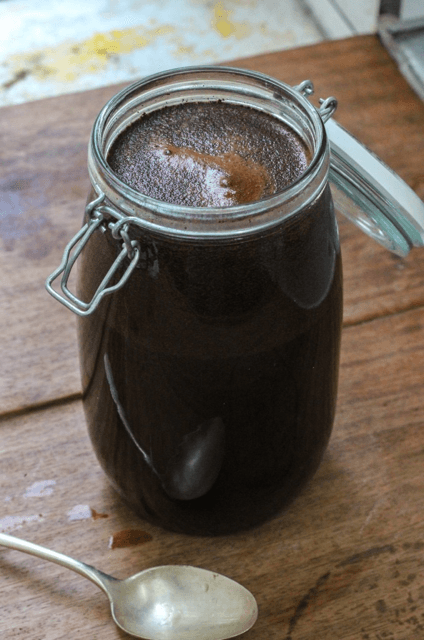
When brewed (steeped is a tea term), strain into a large bowl through a sieve to remove the larger grounds. Discard these (ideally into compost), and then, tucking a few sheets of paper towel into the cleaned sieve, strain back into the jar.
If it still seems to have grounds in it, strain it again but next time, keep the grounds coarser.
If the taste is way too rich for you, change the ratio to more water and less coffee. Practice will make it perfect!

The Last Word for Cold Pressing Coffee
Hopefully, you'll find that cold press coffee is to your liking. As the summer months arrive, and the weather heats up, and all that jazz - sometimes you might appreciate something a little different. Cold press coffee might just do the trick for you!

Wanna Get Crazy?
The Yama Drip Tower is monstrous and expensive and not necessary for home use unless you have tons of cash to burn - but damn, is it ever cool!
The Toddy system is the elite cold-brew tool for this method. The Toddy system is ugly, affordable, simple but produces superb results.
Or you can use the Cafetiere (French Press) and its pressing down with the plunger after the brew has sat for a day.
This contraption limits you as to how much you can make and how effective the steel filter in it is.
Serve with ice, cream, sweetener or just drink the cold pressed coffee black.
Whether you're looking to make your morning routine more sustainable or just want a delicious way to start the day, cold press coffee is an excellent option. You can find all of the necessary information about this trendy beverage here on our blog! We hope that by reading through our post, you'll be able to confidently brew up some cold-pressed goodness for yourself and enjoy it guilt-free while saving money in the process.
Buy on Walmart, eBay, or Etsy
Takeya Patented Deluxe Cold Brew Coffee Maker, 1 qt, Black - Etsy, eBay
BAYKA French Press Coffee Maker, Large Classic Copper 304 Stainless Steel Coffee Press, - Etsy, eBay
Stone Street Cold Brew Coffee, Strong & Smooth Blend, Low Acid, 100% Arabica, Gourmet - Etsy, eBay
Keurig K-Classic Coffee Maker K-Cup Pod, Single Serve, Programmable, 6 to 10 oz. Brew - Etsy, eBay
Cuisinart DCC-3200P1 Perfectemp Coffee Maker, 14 Cup Progammable with Glass Carafe, - Etsy, eBay
Mueller French Press Double Insulated 304 Stainless Steel Coffee Maker 4 Level Filtration - Etsy, eBay
Bodum Pour Over Coffee Maker with Permanent Filter, 1 Liter, 34 Ounce, Black Band - Etsy, eBay
Bizzy Organic Cold Brew Coffee | Smooth & Sweet Blend | Coarse Ground Coffee | Micro - Etsy, eBay
bodum K11683-01WM Bean Cold Brew Coffee Maker, 51 Oz, Jet Black - Etsy, eBay
Presto 02937 Dorothy™ Electric Rapid Cold Brewer - Cold brew at home in 15 minutes - No - Etsy, eBay
 |
 |
 |
 |

About Selmir Omic
Selmir Omic is KYG's cannabis lifestyle writer. He currently resides in San Francisco and can often be found enjoying design-forward cannabis accessories, candles and seltzer simultaneously. When he's not writing about pot or waxing poetic about vape pens, Selmir can be counted on to offer sage advice about the best strains for anxiety or how to make cannabutter without a stovetop.
Thoughts on "Cold Press Coffee – What Is It And How Do I Make It?"
 |
 |
 |
 |
Get FREE Coffee Gifts now. Or latest free grinders from our best collections.
Disable Ad block to get all the secrets. Once done, hit any button below
 |
 |
 |
 |










